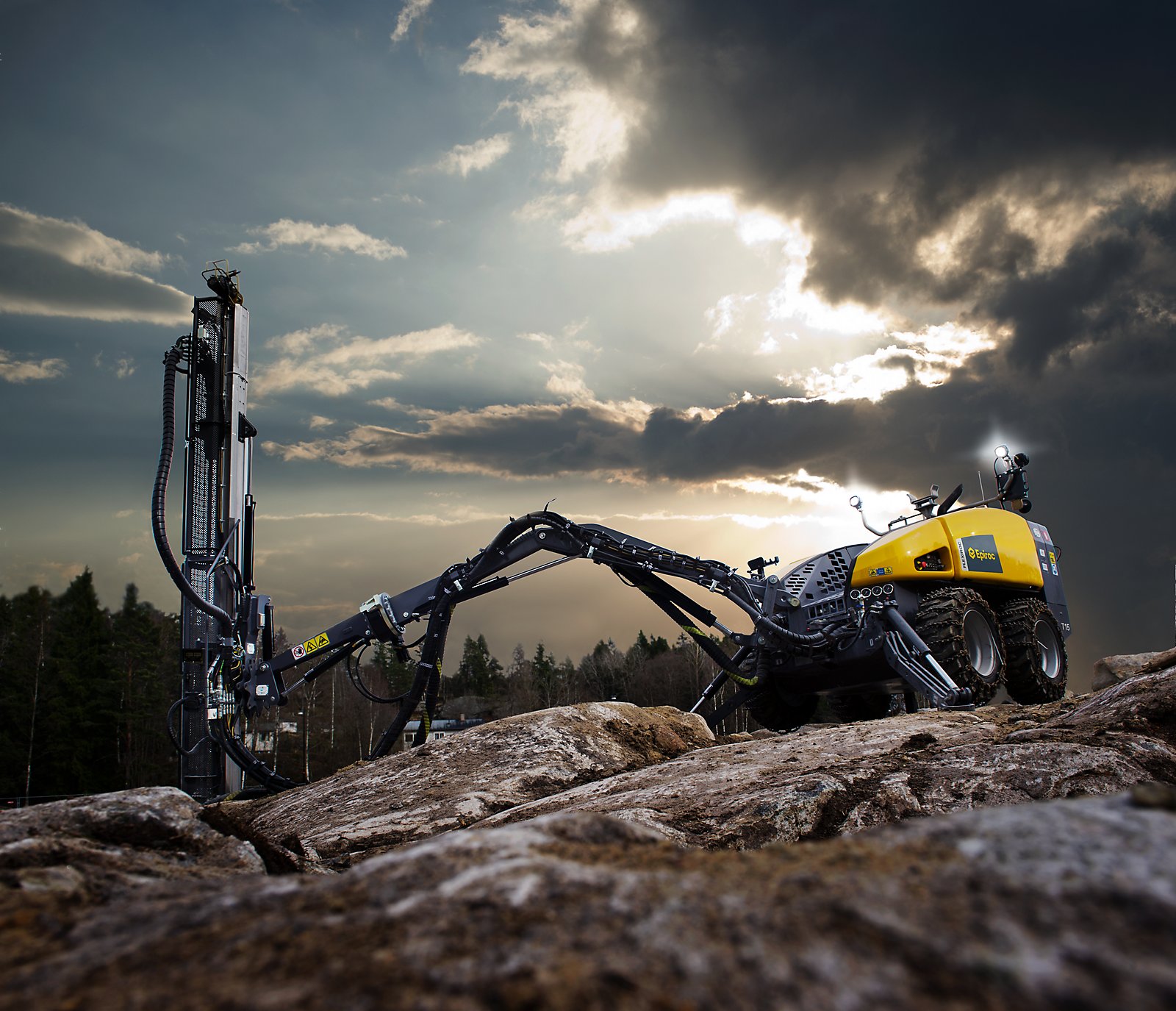The types of drill rigs favored by construction drilling contractors, typically tophammer drill rigs, are inherently noisier than for example a DTH rig. One reason for this is that the rock drill is mounted on the feed instead of Down-The-Hole. Nonetheless, the need for noise reduction on urban construction sites can be addressed by equipping the rig with a noise reduction kit, which Epiroc has been offering since 2005. An updated version, is available for use on rigs such as the SmartROC T35 and SmartROC T40, cutting the noise output from these machines from 127 dB(A) unsilenced to 115 dB(A), and making it possible to hold a conversation next to the operating drill rig. A more sophisticated Rig Control System (RCS) also play its part in cutting noise, with the engines on the current generation of rigs responding to second-by-second requirements, rather than running at full speed all the time.
Air blast is a particular phenomenon that is invariably caused by the detonation of unconfined – or inadequately confined – explosives. The resulting pressure wave is manifested as noise and in damage to surrounding properties; even low overpressure levels can break windows, while high energy waves can cause structural damage. Risk minimization is achieved by using careful blasting procedures, and by ensuring that all explosives are confined with an adequate amount of stemming or cover material in place before detonation.
Ground vibrations result from blasting, with the aim of a good blast design being to minimize the peak particle acceleration associated with the propagation of shock waves through the ground. It is quite common for specialized blasting consultants to be involved to assist the contractor with vibration control and the design of drill patterns, as well as to carry out a thorough survey of adjacent structures before the drilling and blasting can begin. The key to minimizing ground vibrations is to optimize the blasting sequence in terms of the amount of explosives being detonated at one time, through the use of a properly designed detonator delay program. In addition, the drill hole diameter should be kept as small as possible, normally in the range 30–50 mm. To eliminate the risk of fly rock, blasts can be covered with inert material such as sand, or by using heavy mats made of timber, rubber or tires, cut into sections and bound together with steel wire. Weighing around 1 tonne each, these mats absorb energy and prevent loose rock from being dispersed, while their structure allows the gases produced by the blast to flow through.

















